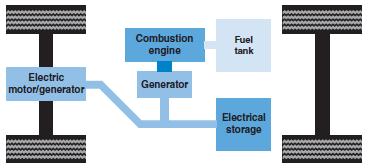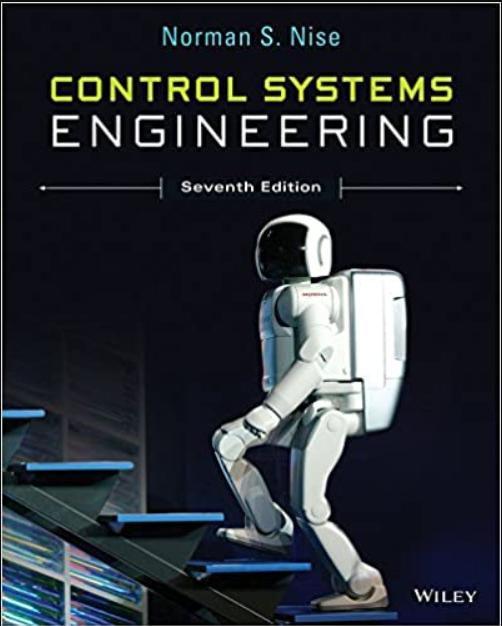The use of hybrid cars is becoming increasingly popular. A hybrid electric vehicle (HEV) combines electric machine(s)
Question:
The use of hybrid cars is becoming increasingly popular. A hybrid electric vehicle (HEV) combines electric machine(s) with an internal combustion engine (ICE), making it possible (along with other fuel consumption–reducing measures, such as stopping the ICE at traffic lights) to use smaller and more efficient gasoline engines. Thus, the efficiency advantages of the electric drivetrain are obtained, while the energy needed to power the electric motor is stored in the onboard fuel tank and not in a large and heavy battery pack.
There are various ways to arrange the flow of power in a hybrid car. In a serial HEV (Figure P1.8),

the ICE is not connected to the drive shaft. It drives only the generator, which charges the batteries and/or supplies power to the electric motor(s) through an inverter or a converter.
The HEVs sold today are primarily of the parallel or split-power variety. If the combustion engine can turn the drive wheels as well as the generator, then the vehicle is referred to as a parallel hybrid, because both an electric motor and the ICE can drive the vehicle. A parallel hybrid car includes a relatively small battery pack (electrical storage) to put out extra power to the electric motor when fast acceleration is needed. See (Bosch, 5th ed., 2000), (Bosch, 7th ed., 2007), (Edelson, 2008), (Anderson, 2009) for more detailed information about HEV.
As shown in Figure P1.10, split-power hybrid cars utilize a combination of series and parallel drives (Bosch, 5th ed., 2007). These cars use a planetary gear (3) as a split-power transmission to allow some of the ICE power to be applied mechanically to the drive. The other part is converted into electrical energy through the alternator (7) and the inverter (5) to feed the

electric motor (downstream of the transmission) and/or to charge the high-voltage battery (6). Depending upon driving conditions, the ICE, the electric motor, or bot propel the vehicle.
Draw a functional block diagram for the cruise (speed) control system of:
a. A serial hybrid vehicle, showing its major components, including the speed sensor, electronic control unit (ECU), inverter, electric motor, and vehicle dynamics; as well as all signals, including the desired vehicle speed, actual speed, control command (ECU output), controlled voltage (inverter output), the motive force (provided by the electric motor), and running resistive force;12
b. A parallel hybrid vehicle, showing its major components, which should include also a block that represents the accelerator, engine, and motor, as well as the signals (including accelerator displacement and combined engine/motor motive force);
c. A split-power HEV, showing its major components and signals, including, in addition to those listed in Parts a and b, a block representing the planetary gear and its control, which, depending upon driving conditions, would allow the ICE, the electric motor, or both to propel the vehicle, that is, to provide the necessary total motive force.
Step by Step Answer:





